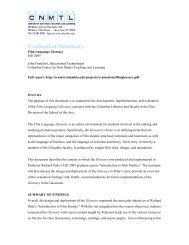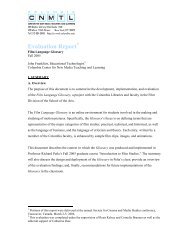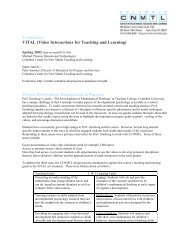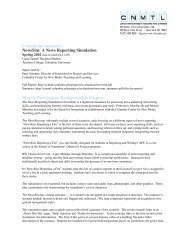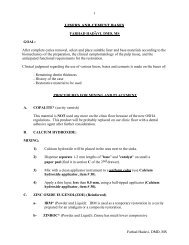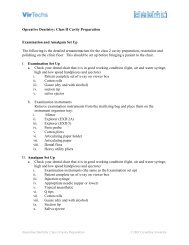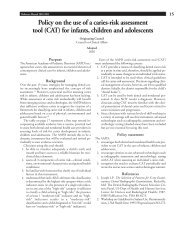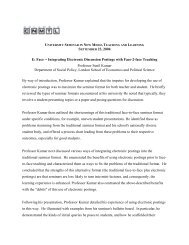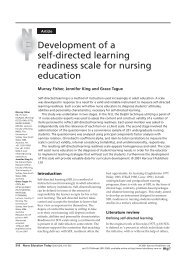Transcript for Maxillary Premolar Wax-up - Columbia University
Transcript for Maxillary Premolar Wax-up - Columbia University
Transcript for Maxillary Premolar Wax-up - Columbia University
Create successful ePaper yourself
Turn your PDF publications into a flip-book with our unique Google optimized e-Paper software.
Dental Anatomy and Occlusion: <strong>Maxillary</strong> <strong>Premolar</strong> <strong>Wax</strong>-<strong>up</strong> (Tooth #4)<br />
Armamentarium<br />
PK Thomas #1<br />
PK Thomas #2<br />
PK Thomas #4<br />
Tooth colored wax<br />
Typodont<br />
Striker<br />
Alcohol lamp<br />
Alcohol<br />
No. 2 pencil<br />
Step 1: Mark and Seal the Margin<br />
Again begin by marking the margin with a pencil to identify it. Then seal the margin with a coat<br />
of wax and use the carver to shape the edges. Place an even coat of wax around the entire tooth.<br />
Step 2: Know the Functional Cusp<br />
The difference between tooth #4 and tooth #21 is that the stem cusp, or the functional cusp, is the<br />
lingual cusp (not the buccal). In addition, the only part of the cusp that is in occlusal contact is<br />
the cusp tip.<br />
The buccal view shows the lingual cusp with the orange cusp tip. Again, remember that wax-<strong>up</strong>s<br />
of posterior teeth are always started with the functional cusp first, unlike the anterior teeth, when<br />
we wax <strong>for</strong> esthetic considerations first and function second.<br />
Step 3: Evaluate the Marginal Ridges<br />
Once the buccal contour is finished, open and close the model, noting that the mesial marginal<br />
ridge of tooth #4 is aligned with the distal marginal ridge of tooth #6, and that the distal marginal<br />
ridge of tooth #5 is aligned with mesial marginal ridge of tooth #4.<br />
Step 4: Evaluate the Occlusal Table<br />
Looking at the occlusal table, we see that the cusp tip of the lingual is occluding with the<br />
opposing tooth. Also the distal marginal ridge aligns with the mesial marginal ridge of tooth #5<br />
and the mesial marginal ridge aligns with the distal marginal ridge of tooth #6.<br />
Note that the lingual cusp tip and the distal and mesial surfaces are aligned with the adjacent<br />
teeth and there are no large spaces between the teeth.<br />
Dental Anatomy and Occlusion: <strong>Maxillary</strong> <strong>Premolar</strong> <strong>Wax</strong>-<strong>up</strong> © 2006 <strong>Columbia</strong> <strong>University</strong>
Looking into the model, the lingual cusp of tooth #5 should be occluding into the distal marginal<br />
ridge of tooth<br />
Pediatrics: Stainless Steel Crown Restoration Page 2 of 2




